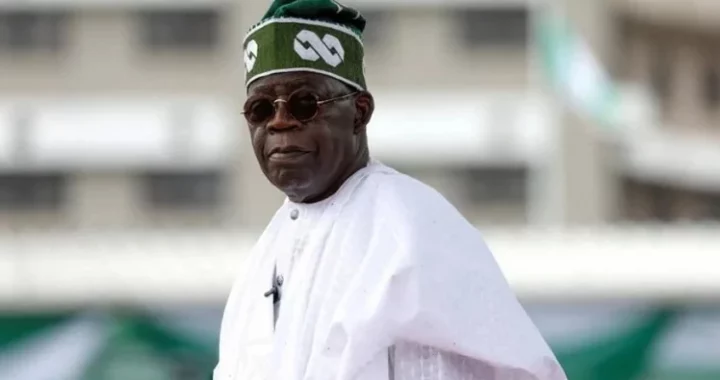Is Ghana’s economy the best model for Zambia?

I read with intrigue an article, “Economist Trevor Simumba’s submissions to President Hakainde Hichilema on economic reforms” in which he made a conclusion, “Ghana’s economy is on the mend. The trade and budget deficits are narrowing. The pace of economic growth rose to above 8 percent in 2019 onwards from 2.2 percent in 2015.”
It is my least interest to undervalue views of another professional. As a code of conduct, professionals don’t wash dirty linen in public against each other. Therefore, I simply wish to share what I know about Ghana beyond macroeconomic stability. As I’m not an economist, I can only respect what economists say, and in this case, I do for Trevor. If Trevor’s conclusion, “Ghana’s economy is on the mend” implies macroeconomic stability, I have nothing to say. But let me say something about Ghana’s situation beyond macroeconomic stability.
Many years ago, I remember the World Bank and IMF making many public statements about Ghana as a model of Africa’s success in the implementation of the structural adjustment program (SAP). I have little knowledge in economics but having worked in the United Nations for fifteen years on economic and trade issues, and using statistics for many years to help countries understand the performance of their economies, let me share with you what I know.
Again, beyond macroeconomic stability, I know that Ghana’s economy is not on the mend. Figure 1 below shows Ghana’s economic growth using GDP and per capita GDP for the period 2000-2020. For a country several times emblazoned by World Bank, IMF and many other international experts, by now Ghana’s economy should have shown good example for other African countries.
First, Figure 1 shows that it has been struggling for many years. After the height of 14% growth of GDP and per capita GDP of about 12%, both crushed down to 0 and below 0% in 2020. This is not an indication of the “mend,” is it? For me, even if macroeconomic stability is taking place, in the midst of falling economic growth like this, the former matters little. Per capita, often ignored by economists in their analysis is extremely important as it touches the very stomach of individual citizens. But here, we see growth sinking lamentably. In other words, growth of GDP alone does not constitute economic growth when per capita, which measures the individual’s benefit or not from it is not growing.

Second, it cannot be a “mend” when Ghana’s current account balance shown in Figure 2 below has, for many years been going the downturn way. Yes, trade balance has been improving from 2014-2020 but do not ignore the past. This trend of bad performance by Ghana cannot be the model that Zambia wants to emulate.

Third, if it were a good model, trumpeted by World Bank and IMF, Ghana by now should have shown other African countries that it is champion for export value addition or exporter of more manufactured goods than primary commodities as means to integrate in global manufactured goods. As a rentier state like Zambia, Ghana needs to move away from exporting more raw mineral products into exporting more manufactured goods. That is one of Zambia’s outstanding policies for many years to be converted into action. But Ghana is not a good model for Zambia because statistics in Figure 3 below show that Ghana’s match towards global integration in manufacturing is very far. It shows that Ghana continues to export more primary commodities than manufactured goods, hence cannot be a suitable model for Zambia.

Forth, another of Zambia’s pending outstanding policy is structural transformation, meaning expanding manufacturing in the GDP. Ghana too. But for now, Ghana cannot be a model because its trend in manufacturing value added in GDP is very low. As Figure 3 below shows, the proportion of manufacturing value added in GDP slumped from about 25% in 2000 to about 10% in 2019.

Finally, Ghana has been struggling in promoting inward foreign direct investment flows. Apart from the share’s rise in GDP between 2000 and 2009, Figure 4 below shows major erosion, from 8% in 2009 to almost 3% in 2020.

Conclusion
Again, I simply wanted to provide some statistical information to help Zambians understand that while macroeconomic stability may be taking place in Ghana, that country has a long history or receiving praises for its economic match which, however has not turned into action. Good performance in macroeconomic issues might mislead people as good performance of the economy. Economy is not only about macroeconomic issues but includes economic fundamentals such as manufacturing in the economy. Despite good record in macroeconomic issues, statistics show that Ghana’s economic growth measured by GDP and per capita GDP is not a good model for Zambia. Perhaps we should try Viet Nam which has overtaken Africa in exports of manufactured goods.
source: Lusaka Times


 President Akufo-Addo Inaugurates Dualisation of Anwiankwanta-Ahenema Kokoben Road to Ease Traffic and Boost Connectivity
President Akufo-Addo Inaugurates Dualisation of Anwiankwanta-Ahenema Kokoben Road to Ease Traffic and Boost Connectivity  Angola-Zambia Road Project to Boost Trade and Economy in Eastern Angola
Angola-Zambia Road Project to Boost Trade and Economy in Eastern Angola  ECOWAS HQ construction draws closer to completion
ECOWAS HQ construction draws closer to completion  BP Subsidiary to Sell 50% Stake in Maputo Airport Fuelling to Petromoc
BP Subsidiary to Sell 50% Stake in Maputo Airport Fuelling to Petromoc  Nigerian President: Fuel Subsidy Removal Saves $1.32B in 2 Months
Nigerian President: Fuel Subsidy Removal Saves $1.32B in 2 Months  Tanzania’s Fuel Prices Surge Amid Cross-Border Fuel Sourcing
Tanzania’s Fuel Prices Surge Amid Cross-Border Fuel Sourcing  TENDER FOR THE ESTABLISHMENT OF CODING & ROBOTIC HUBS IN SCHOOLS | SOUTH AFRICA
TENDER FOR THE ESTABLISHMENT OF CODING & ROBOTIC HUBS IN SCHOOLS | SOUTH AFRICA  Power China Group Utilizes Linnhoff TSD1500 for Key Rural Road Projects in Kenya
Power China Group Utilizes Linnhoff TSD1500 for Key Rural Road Projects in Kenya